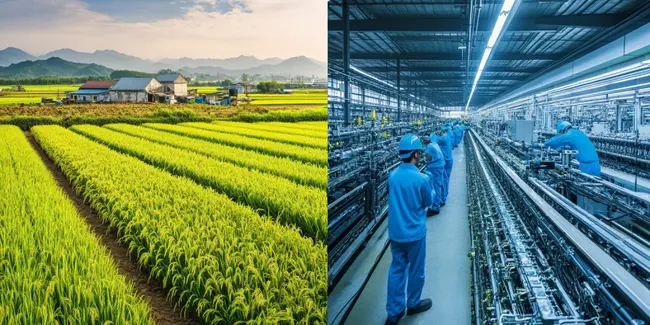image credit: https://chinesemfg.com/wp-content/uploads/2024/11/how-china-became-the-worlds-manufacturing-hub-1024×512.png
- Apr 28, 2025 6:15 am GMT
China’s dominance in global manufacturing is the result of a multi-decade transformation driven by deliberate policy, infrastructure investment, and operational excellence.
Key Factors Behind China’s Manufacturing Leadership
-
Abundant and Skilled Labour
China’s vast population has provided a steady supply of relatively inexpensive, increasingly skilled labour. Internal migration from rural to urban areas has ensured factories always have workers, while ongoing investment in training has created a workforce adept at both basic and advanced manufacturing tasks. -
Strategic Government Policies
Economic reforms starting in the late 1970s, especially the creation of Special Economic Zones (SEZs), attracted foreign investment and technology. China’s 2001 entry into the WTO further integrated its economy into global supply chains, boosting exports and competitiveness. -
World-Class Infrastructure
Massive government investment has built extensive transportation networks, ports, and industrial parks. This infrastructure supports efficient logistics and rapid scaling of production, minimising delays and reducing costs. -
Integration into Global Supply Chains
China’s manufacturers are deeply embedded in international supply chains, supplying both components and finished goods to companies worldwide. This integration has made China indispensable for global production. -
Moving Up the Value Chain
Chinese firms have shifted from low-value, labour-intensive goods to high-tech products. Companies like Huawei, Lenovo, and Xiaomi now compete globally in advanced sectors, reflecting a climb up the value chain. -
Large Domestic Market
China’s huge home market allows companies to achieve scale and test products locally before expanding abroad, reducing risk and fueling further growth.
Operational Excellence as a Competitive Edge
China’s manufacturing success is not just about cost-it’s about operational excellence:
-
Continuous Improvement and Flexibility
Leading Chinese factories frequently redesign operations and layouts, sometimes as often as every six months, to adapt to changing market demands. This agility enables rapid response to global trends and customer needs. -
Adoption of Global Best Practices
Many manufacturers have embraced Lean, Six Sigma, and other quality management systems to boost efficiency, reduce waste, and ensure high product quality. These practices, while sometimes challenging to implement due to cultural factors, are increasingly common in advanced Chinese plants. -
Internal Learning and Innovation
Top Chinese firms focus on building internal capabilities, fostering a culture of continuous improvement and innovation. Companies like Haier have set global benchmarks for quality and operational discipline, making excellence a core part of their identity.
“Competitors may be able to replicate these companies’ equipment and operating policies, but they will find it difficult to emulate the best way to use them.”
Summary Table: China’s Manufacturing Leadership
| Factor | Description |
|---|---|
| Labor | Large, skilled, and cost-effective workforce |
| Policy | Pro-business reforms, SEZs, WTO integration |
| Infrastructure | Modern ports, roads, industrial parks |
| Value Chain | Shift from low-cost to high-tech, branded goods |
| Operational Excellence | Lean, Six Sigma, continuous process improvement |
| Domestic Market | Scale and demand for rapid growth and innovation |
China’s operational excellence-rooted in adaptability, quality focus, and relentless improvement, transformed it from the world’s low-cost factory to a global leader in advanced manufacturing.
Aniket Kumar
Get Published – Build a Following
The Energy Central Power Industry Network® is based on one core idea – power industry professionals helping each other and advancing the industry by sharing and learning from each other.
If you have an experience or insight to share or have learned something from a conference or seminar, your peers and colleagues on Energy Central want to hear about it. It’s also easy to share a link to an article you’ve liked or an industry resource that you think would be helpful.











